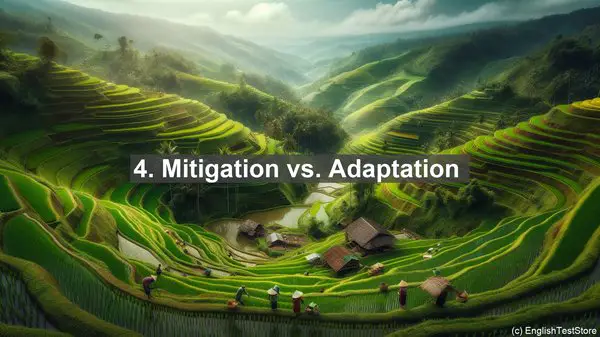Introduction: The Language of Climate Dynamics
Welcome to today’s lesson where we’ll be diving into the fascinating world of climate dynamics. Now, while the subject itself is captivating, it’s important to note that the terminology used can sometimes be a bit tricky. In this lesson, we’ll be shedding light on the top 10 words that often lead to confusion. So, let’s get started!
1. Weather vs. Climate
One of the most common misconceptions is the difference between weather and climate. While weather refers to the short-term atmospheric conditions, climate encompasses long-term patterns. Think of it this way: weather is what you experience on a daily basis, while climate is the average of those weather conditions over a longer period, usually 30 years or more.
2. Global Warming vs. Climate Change
These terms are often used interchangeably, but they have distinct meanings. Global warming specifically refers to the increase in Earth’s average surface temperature, primarily due to the buildup of greenhouse gases. On the other hand, climate change encompasses a broader range of effects, including shifts in precipitation patterns, sea-level rise, and more, all resulting from the warming of the planet.
3. Greenhouse Effect vs. Global Warming
While global warming is a consequence of the greenhouse effect, they are not the same thing. The greenhouse effect is a natural process that has been occurring for millions of years. It involves the trapping of heat by certain gases in the atmosphere, which keeps our planet warm and habitable. However, human activities, such as the burning of fossil fuels, have intensified this effect, leading to global warming.
4. Mitigation vs. Adaptation
When it comes to addressing climate change, these two strategies play a crucial role. Mitigation refers to actions taken to reduce or prevent the emission of greenhouse gases, thus tackling the root cause of climate change. On the other hand, adaptation focuses on adjusting to the changes that are already occurring or are inevitable. It involves measures like building sea walls to protect against rising sea levels or implementing drought-resistant farming techniques.
5. El Niño vs. La Niña
These terms are used to describe the two phases of a natural climate pattern known as the El Niño-Southern Oscillation. El Niño refers to the warming of the central and eastern tropical Pacific Ocean, which can have far-reaching effects on weather patterns worldwide. La Niña, on the other hand, is characterized by cooler-than-average sea surface temperatures in the same region. Both phenomena can influence everything from rainfall patterns to hurricane activity.
6. Albedo vs. Greenhouse Effect
Albedo and the greenhouse effect are two factors that directly affect Earth’s energy balance. Albedo refers to the reflectivity of a surface. Surfaces with high albedo, like ice and snow, reflect more sunlight back into space, thus cooling the planet. On the other hand, surfaces with low albedo, like dark forests or asphalt, absorb more sunlight, leading to warming. The greenhouse effect, as we discussed earlier, involves the trapping of heat by certain gases in the atmosphere.

7. Positive Feedback vs. Negative Feedback
In the context of climate change, feedback loops can either amplify or dampen the initial change. Positive feedback refers to a situation where the response to a change in the system amplifies that change. For example, as temperatures rise, the melting of Arctic ice reduces the planet’s albedo, leading to further warming. Negative feedback, on the other hand, acts as a stabilizing force, countering the initial change. An example is the increased cloud cover that can cool the surface.
8. Aerosols vs. Greenhouse Gases
While both aerosols and greenhouse gases can influence the climate, they have different properties. Greenhouse gases, like carbon dioxide and methane, trap heat in the atmosphere, leading to warming. Aerosols, on the other hand, are tiny particles suspended in the air. Depending on their composition, they can either cool or warm the planet. For instance, sulfates from volcanic eruptions can reflect sunlight, leading to a temporary cooling effect.
9. Resilience vs. Vulnerability
When it comes to assessing the impact of climate change, these two concepts are crucial. Resilience refers to the ability of a system, whether it’s a community or an ecosystem, to withstand and recover from disturbances. Vulnerability, on the other hand, is the degree to which a system is susceptible to harm. Understanding both aspects is essential for effective climate planning and adaptation strategies.
10. Proxy Data vs. Instrumental Data
In studying past climate patterns, scientists rely on two types of data. Proxy data are indirect measurements, such as ice cores or tree rings, that provide information about past climate conditions. Instrumental data, on the other hand, are direct measurements, usually obtained from weather stations or satellites. By combining both types of data, researchers can gain a comprehensive understanding of how the climate has changed over time.

